Production Designer Tamara Deverell on Building the Gothic Grandeur of Guillermo del Toro’s “Frankenstein”
Guillermo del Toro became obsessed with Frankenstein at the age of seven, after seeing the 1931 Boris Karloff movie, and walked out of the theater with a new calling. “Gothic horror became my church,” Del Toro said in a statement, “and [Boris Karloff] became my messiah.”
Ever since that childhood epiphany, del Toro has dreamed of reanimating Mary Shelley’s famous monster for modern audiences. Now comes his Frankenstein (in theaters now, Nov. 7 on Netflix), which follows the brilliant but cruel Victor Frankenstein (Oscar Isaac) and his Creature (Jacob Elordi) through a 19th-century cautionary tale about science gone wrong, the monsters within man’s ambition, and an electric story about fathers and sons.
Co-starring Mia Goth and Christoph Waltz, this Frankenstein draws dramatic power from the sumptuous backdrops created by BAFTA-nominated production designer Tamara Deverell (Nightmare Alley, The Strain, Guillermo del Toro’s Cabinet of Curiosities). Like Frankenstein himself, each environment was stitched together from disparate elements to produce a 360-degree spectacle. Deverell says, “One of the things about Guillermo: if you build it, he will shoot it. Some directors never show three-quarters of the room. With Guillermo, you know he’s going to favor every inch of the place.”
During a recent visit to Los Angeles, the Toronto-based Deverell talked about building icebergs, piecing together a palatial villa, and outfitting the mad scientist Frankenstein’s towering laboratory by the sea.
Frankenstein opens in the “Farthest North,” a vast frozen expanse where The Creature wreaks havoc on a ship of Arctic explorers. Where did you film all that ice and snow?
“Farthest North” is actually the parking lot of Netflix studio in Toronto.
No kidding!
What you would see from the top of the ship deck would be downtown Toronto, so “Thank you, visual effects, for taking that out and extending our ice expanse!”
How did you build icebergs on a parking lot?
We used a metal base structure and clad it with Styrofoam and silicone to create those giant icebergs. Then we covered it with real snow and ice. That’s the icing on the cake, so to speak.
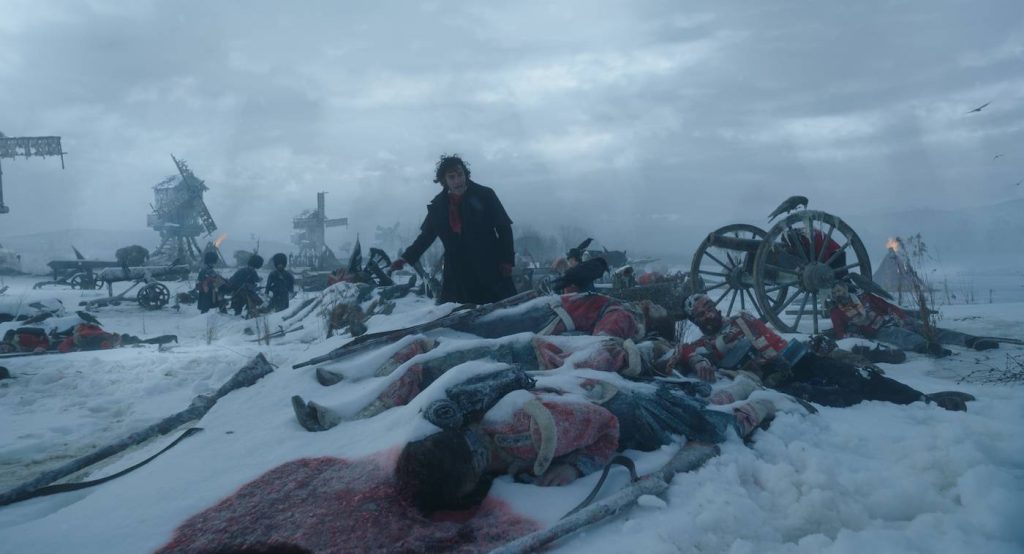
But why a parking lot?
We were looking at doing the Arctic in a field, but logistically, it made sense to have the ice and snow close to our studio. In case the weather wasn’t in our favor, we could move inside. In some ways, it was a nightmare because the crew lost all their parking, but that was outweighed by the ease of being able to run lighting tests and shoot fragments.
And the ship itself?
We built the ship on this big metal truss system and a huge roller gimbal positioned in the parking lot underneath our ship, which was made from period boards, water-blasted, and aged. We also built this little pool with a giant piece of flipping ice at the base of the ship for when the Creature falls into the water.
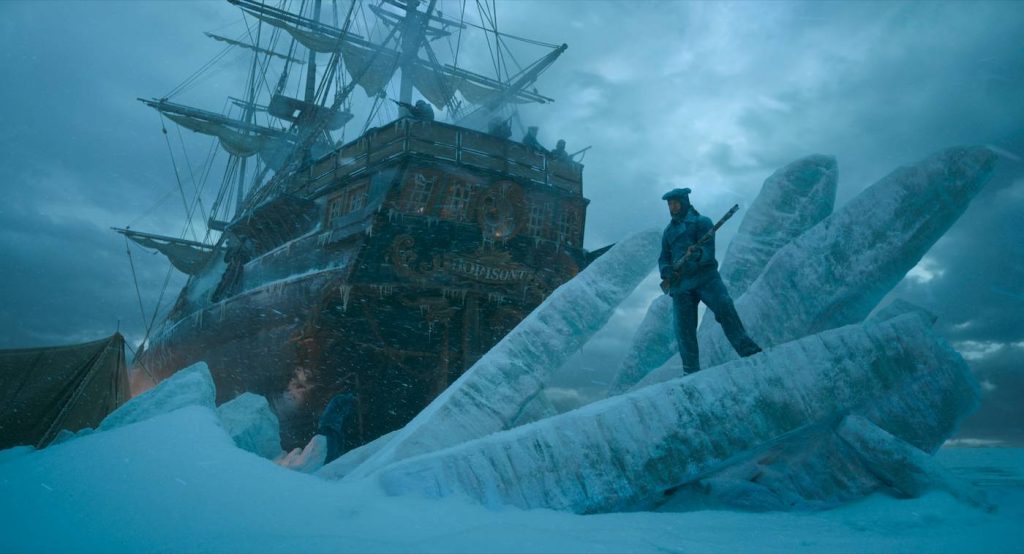
How did you design such a realistic-looking ship from the 1850s?
Well, I used to be a shipbuilder.
Go on…
Honest truth. I went to art school in Vancouver, a port town, of course, and one of my summer jobs was finishing ships. I’d been very interested in wooden sailing vessels all my life, so when I became a production designer, I was like “Boy, if I could ever build a ship, wouldn’t that be fun!”
Even with your experience, you must have done a lot of research.
I visited maritime museums in Halifax, in Glasgow, and at London’s Royal Museums Greenwich, where they have the [19th century clipper] Cutty Sark. I connected with historians and people who build models of Arctic exploration ships. I became an avid fan of the Terror and the Erebus ships from the [Sir John] Franklin Expedition to the Arctic, which we based a lot of our ship on.
From the Farthest North, we flash back to a sprawling estate in Europe where young Victor Frankenstein grows up surrounded by luxury. Where did you find that villa, which looks to be as wide as a football field?
Part of Victor’s villa comes from the Gosford House in Scotland, which is an amazing estate, although it’s crumbling. I thought Guillermo would never go for it because it’s too white. Like, ivory white. We couldn’t paint it because it’s a historic building. But the magic of [cinematographer] Dan Laustsen‘s lighting made it work. And also, I just had to show Guillermo that double staircase.
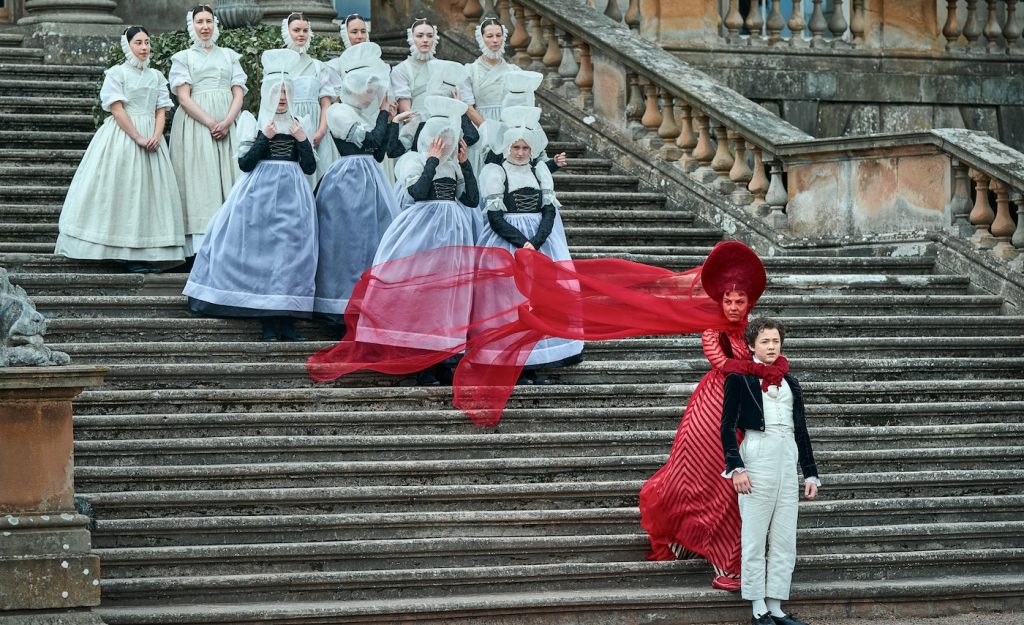
What else did you draw from?
We also shot Burghley House, and we shot some at Wilton House, which are both outside of London. We shot at the Dunecht House in Aberdeenshire, Scotland, which nobody had heard of until Frankenstein came knocking on its door. And I took elements from all these locations into the studio set.
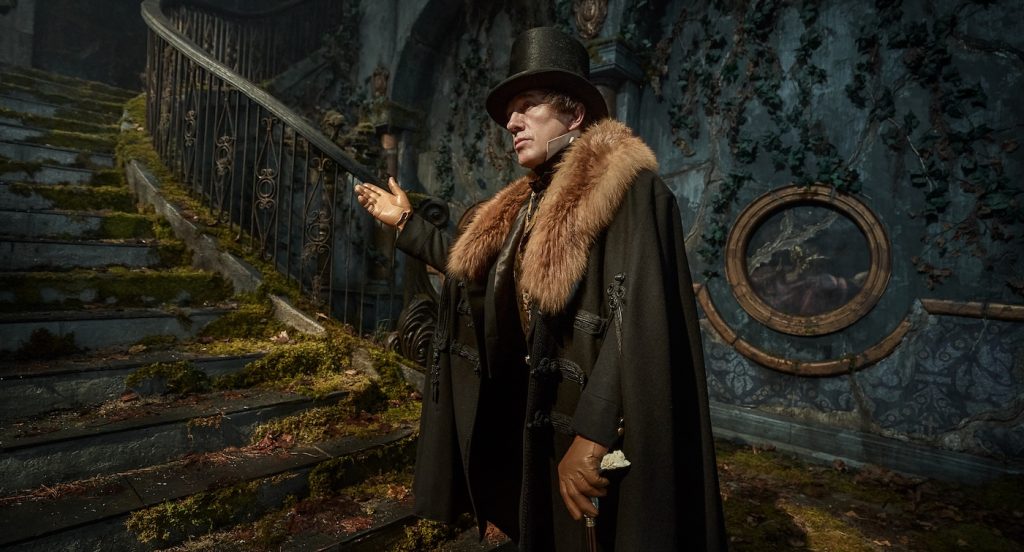
The gleaming Frankenstein family library stretches on and on, lined with thousands of books.
It looked nothing like that when we came in because the library had been used for kids’ birthday parties, so there were skateboarding marks up and down. All the shelving had been ripped out, so we had to build all those bookshelves ourselves. But the base architecture was there and Guillermo loves long and narrow sets—he frames them so beautifully—so I knew as soon as we walked in, that room would be in the movie.
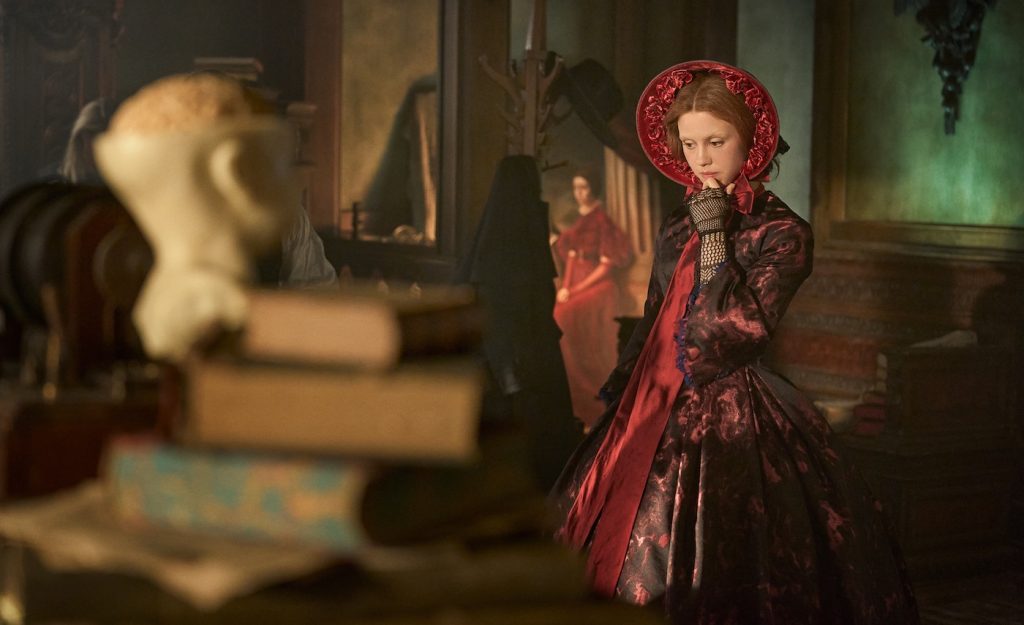
Cut to Victor Frankenstein as an adult scientist building his monster inside this spooky, spindly castle perched on the edge of a cliff.
It’s not a castle, actually; it’s an abandoned water tower. Guillermo wanted Victor to do his work in some great municipal building that had never become operational, and he wanted it on the edge of a cliff. That was in his head from the get-go. We pulled pieces from locations like Wallace Tower in Scotland and the Giant Cold Feet sculpture at St. Stephen’s Church in Edinburgh. Then [concept artist] Guy Davis drew sketches, I drew sketches, and between us, we had so many towers! But the one on the edge of the cliff – that’s what Guillermo fixated on.
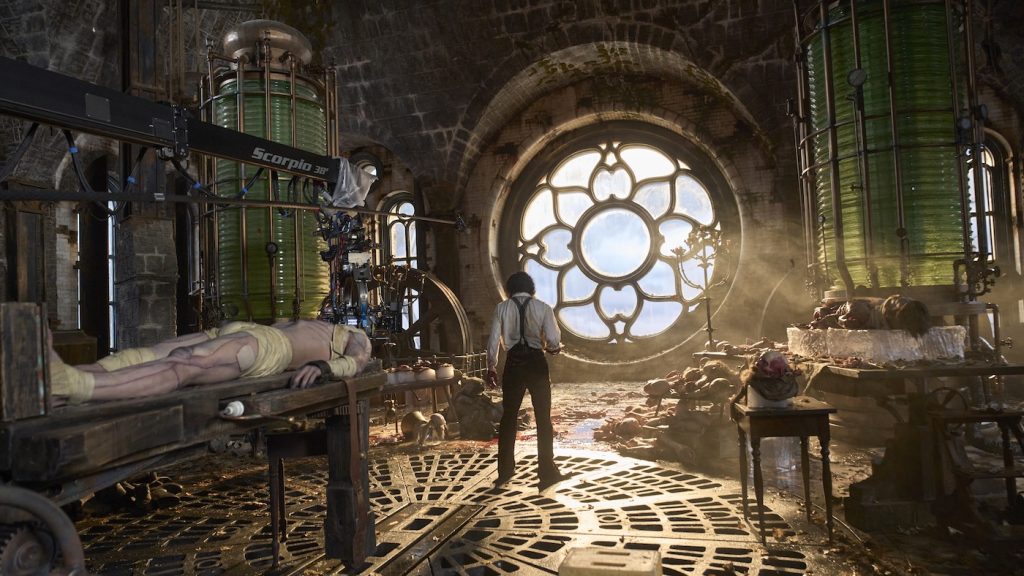
Was Frankenstein’s tower a physical building or a VFX creation?
VFX did the sky and stuff, but we wanted to physically build that water tower as miniatures, which I like to call a “maxiture” because it was 26 feet tall. We used that in the wide shots. Jose Granell of the Magic Camera Company was our key builder at Shepperton Studios [in London]. We built the tower base on a field in Canada for all the ins and outs. But having that model of the tower, which Guillermo insisted on, really made a difference because Dan could light it, and on some shots, the real sky is actually there in the background.
The 19th-century scientific equipment inside the Tower really enhances the atmosphere. Did you make those pieces?
We went to the Hunterian Museum at the Royal College of Physicians and Surgeons in London, where I took a million pictures of real equipment and the real Evelyn tables [displaying human tissue]. Some of the set dressing pieces, such as the copper pots, were handmade, but most of it was rented from antique prop houses in the UK and shipped to our studio sets in North America. There’s nothing like the real thing.
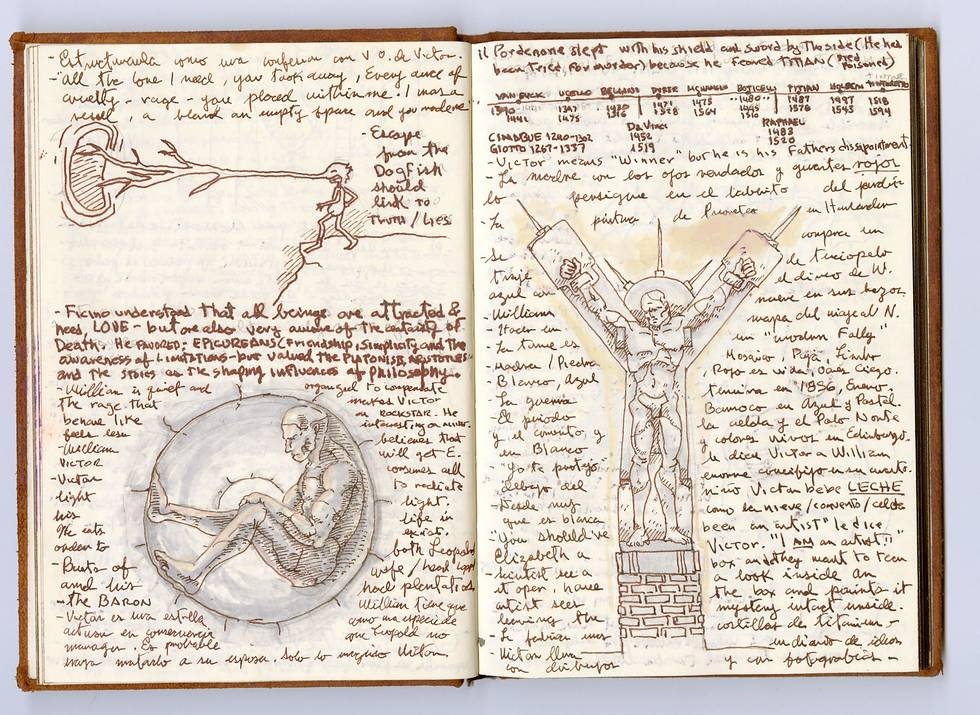
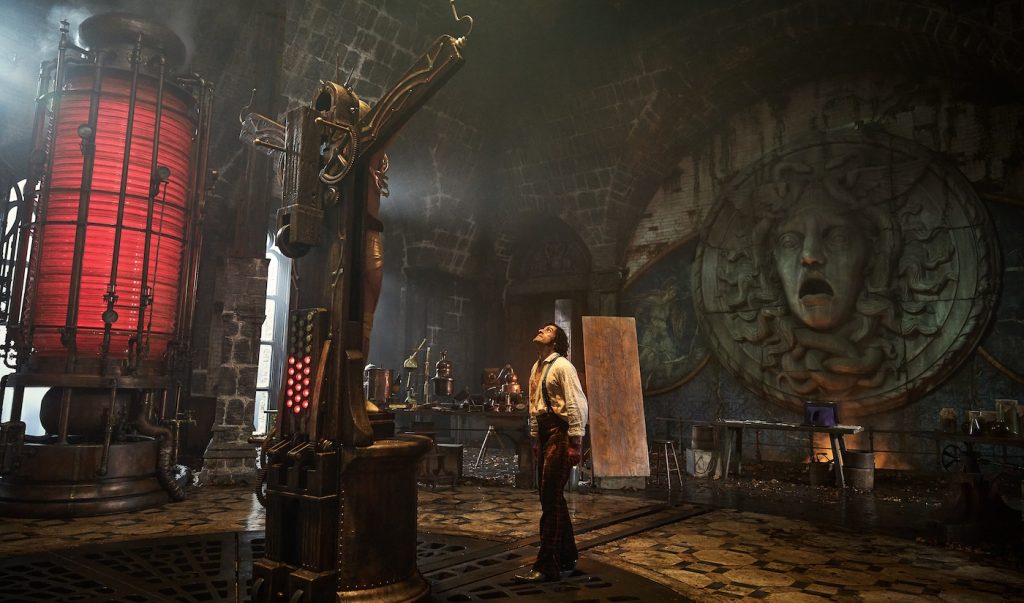
The Creature eventually escapes from the Tower and befriends a family of peasants living in a humble cottage on the edge of a beautiful forest.
We call it the Mill House and the fencing, the little gateway, the exterior – that was all built on stage months before we shot it. The Mill House just sat there through the winter, which gave it a particular patina. Then we dressed it in two different looks, one for spring-summer and one for fall-winter.
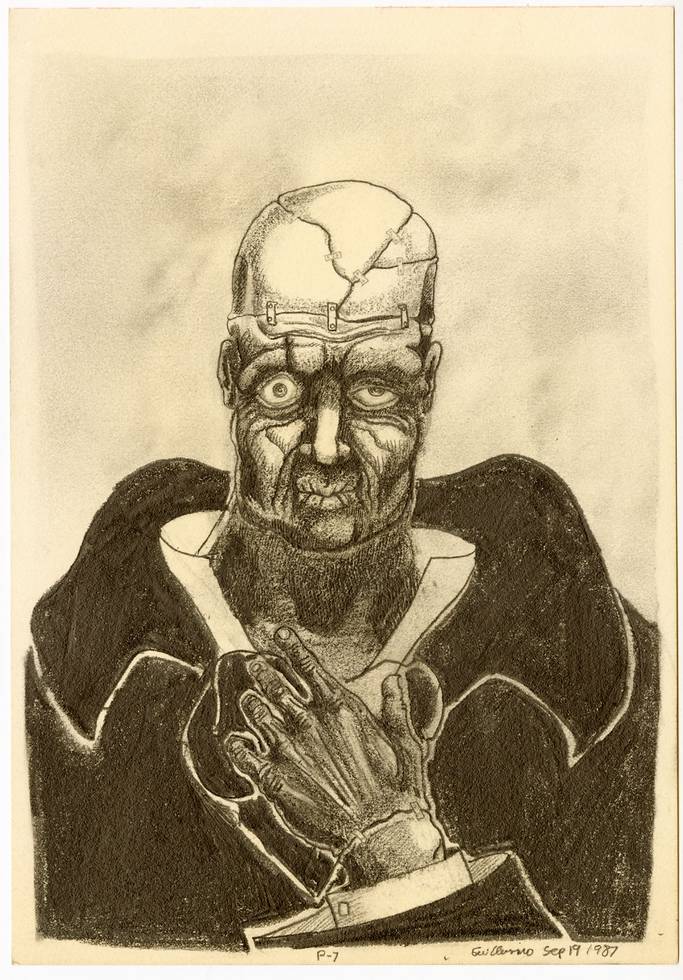
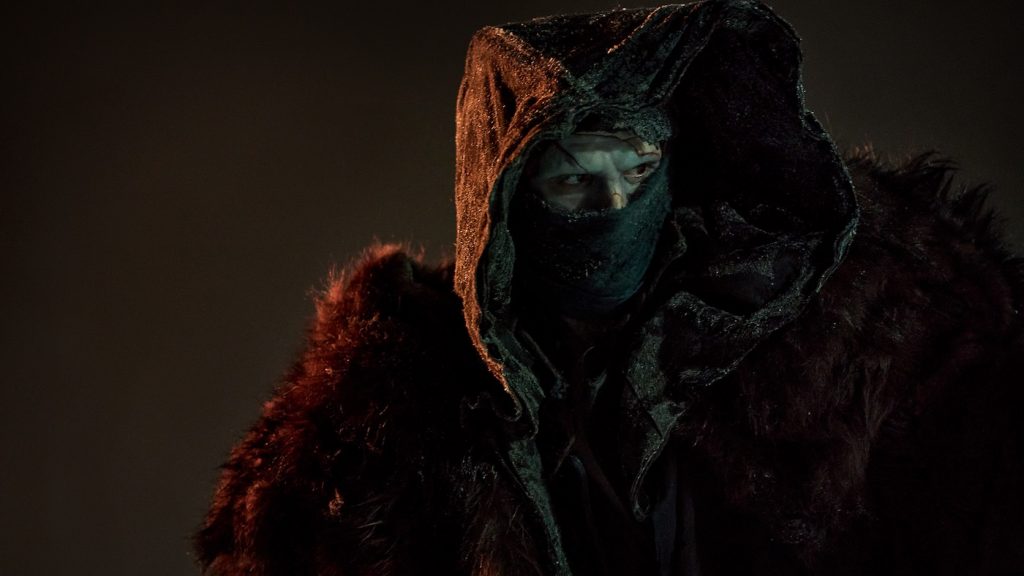
Everything goes violently downhill from there, but this fairytale-like interlude offers a nice respite from the horrors to come.
Well, part of that has to do with the Creature’s proximity to nature. We shot the forest scenes in the countryside of Ontario, and it’s very much related to what we had seen in Scotland. We’re supposed to be somewhere non-specific in Europe, but it just felt right. The conservation area where we filmed is particularly fairytale-like, with the trees coming out of the rocks. That’s where Creature communicates with the deer. We brought in the fake deer, which was created by VFX, and the berry tree, but the rest of it is just the real beauty of nature, which I think speaks to us all.
Frankenstein is in theaters now and arrives on Netflix on November 7.
Featured image: FRANKENSTEIN. – BTS – (L to R) Director Guillermo del Toro and Oscar Issac as Victor Frankenstein on the set of Frankenstein. Cr. Ken Woroner/Netflix © 2025.

